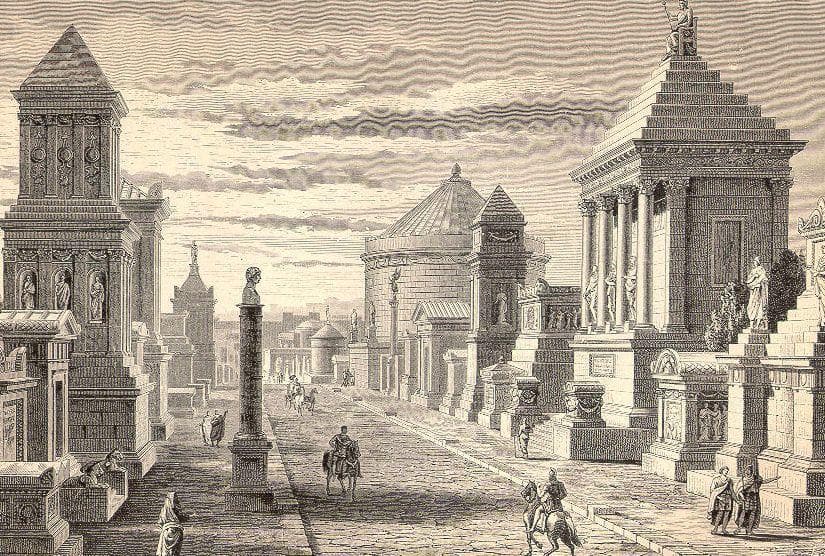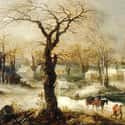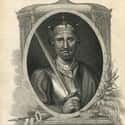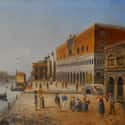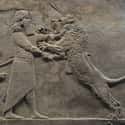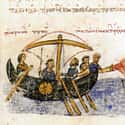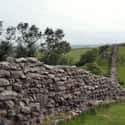-
(#11) Little Ice Age
- Event
Aside from the dragons and army of White Walkers, one of the biggest elements that separates Game of Thrones from a true medieval setting is the wacky weather of Westeros. The seasons in the Seven Kingdoms don’t change on a yearly basis, but instead, slowly rotate through summers and winters that can last generations at a time. While that type of climate phenomena is clearly fantastical, the Little Ice Age is about as close as the real Earth ever came to a “Winter is Coming” moment.
The Little Ice Age, formally known as a climate interval, started in the 14th century and lasted for more than five centuries. During that time, temperatures declined in the Northern Hemisphere and glaciers expanded. Frequent famine was an unfortunate result for many living in the top half of the world during the Little Ice Age, something the people of Westeros have had to face in the past - and will perhaps have to face again in the future - of Game of Thrones.
-
(#10) William the Conqueror
- Notable Figure
Aegon the Conqueror united the Seven Kingdoms of Westeros generations before the events in Game of Thrones, and this bit of Westerosi history mirrors the real-life reign of William the Conqueror. The most notable difference between the two was William’s lack of dragons.
As the Duke of Normandy, William crossed the English channel and began a slow and steady conquest of England, similar to how Aegon arrived from Dragonstone to start conquering all of Westeros. Through militaristic might and the forging of alliances, William started a dynasty that lives on to this day - just like how Aegon’s reign eventually leads to the arrival of Daenerys Targaryen.
-
(#7) The Braavosi Are Basically Venetians
The fictional city of Braavos may be located across the sea from Westeros, but it plays a major role in Game of Thrones. Most notably, it's where Arya learns the art of face-swapping and fighting. The infrastructure of Braavos is dominated by canals, which makes it pretty obviously inspired by the real-life city of Venice. But there’s more to the connection than waterways.
Like Venice, Braavos operates as an independent city-state. Whereas the politics of Braavos are dominated by the Iron Bank and the mysterious guild of the Faceless Men, Venice was ruled for centuries by a similarly nebulous group called the Council of Ten.
-
(#3) Ashurbanipal
- Author
Ramsay Bolton’s favorite method of torment is a Bolton family tradition and one of the most gruesome details in all of Game of Thrones. Flaying and skinning one’s enemies seems like something invented for a gritty fantasy series, but it happened at several points throughout history, including in the court of the Assyrian king Ashurbanipal.
After reconquering a city that had tried to leave his empire, Ashurbanipal reportedly asked for a pillar to be built at the city gate. Then, he had the rebel leaders flayed and used their skins to wallpaper the pillar as a powerful testament to his wrath. For good measure, Ashurbanipal had a few cadavers impaled and put on display, demonstrating true Ramsay-esque sadism.
-
(#9) The Battle Of Blackwater Bay Follows The Plot Of The Second Arab Siege Of Constantinople
The conflict at Blackwater Bay closes the second season of Game of Thrones and remains one of the most epic moments in the series. Some viewers might have felt the fiery action stretched the bounds of the show’s semi-medieval setting, but things actually went down a lot like the Second Arab Siege of Constantinople.
Both conflicts featured a naval strike against a city that sat on a bay, with Constantinople protected by the Golden Horn. The Turks didn’t have access to the fictional wildfire, but they did have Greek fire, an incendiary substance that was thrown at enemy ships with great success. The bay at Constantinople was also protected by a great chain, which is the same defense Tyrion Lannister uses to turn the tide against Stannis Baratheon's fleet.
-
(#4) The Wall Has An Ancient Roman Counterpart In Hadrian’s Wall
The most obvious historical parallel in A Song of Ice and Fire is also the one that inspired the entire series. While the Romans didn’t have the technology to erect a towering wall of ice like the one along the northern border of Westeros, they did build Hadrian’s Wall across 73 miles of northern Britain.
Hadrian’s Wall was intended to keep out those the Romans saw as barbarians - Picts, in this case, instead of Wildlings. Just as the Wall marks the northernmost reach of Westerosi authority, Hadrian’s Wall was also seen as a marker of the Roman Empire’s upper limit. There was no analog to the Night’s Watch tasked with manning Hadrian’s Wall, though; it was just staffed by the Roman legions.
As George R.R. Martin tells it, his first inklings of the story that would become A Song of Ice and Fire began with a visit to Hadrian’s Wall:
The Wall predates anything else. I can trace back the inspiration for that to 1981. I was in England visiting a friend, and as we approached the border of England and Scotland, we stopped to see Hadrian’s Wall. I stood up there and I tried to imagine what it was like to be a Roman legionary, standing on this wall, looking at these distant hills. It was a very profound feeling. For the Romans at that time, this was the end of civilization; it was the end of the world. We know that there were Scots beyond the hills, but they didn’t know that. It could have been any kind of monster. It was the sense of this barrier against dark forces - it planted something in me. But when you write fantasy, everything is bigger and more colorful, so I took the Wall and made it three times as long and 700 feet high, and made it out of ice.
New Random Displays Display All By Ranking
About This Tool
When George RR Martin created a highly detailed fantasy medieval world, most of the content of "Game of Thrones" based on medieval European history. It is certain that Martin drew a lot of historical details from the "War of the Roses", which between the Lancaster family and the York family for the throne of England from 1455 to 1485 AD. They are the two descendants of the King Edward III of the Gorse dynasty.
There are many plots in "Game Of Thrones" that have real historical parallels in medieval times. The random tool lists 15 details about the historical events that are similar to "Game Of Thrones".
Our data comes from Ranker, If you want to participate in the ranking of items displayed on this page, please click here.

